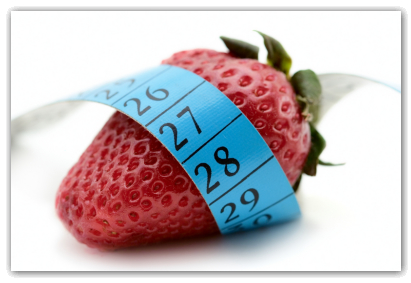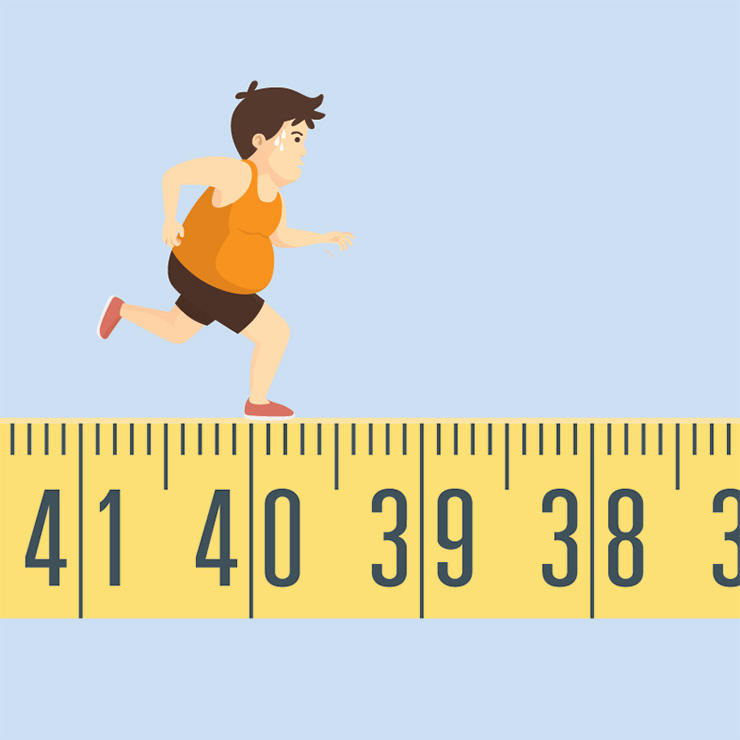How to Lose 15 Pounds in 2 Months
Losing weight can seem like a monumental goal, but for many of us, all it might take are some changes in attitude and diet. To lose 15 pounds in two months, you will be trying to lose 1–2 pounds a week. This is doable for almost anyone with the right information and support. For most people, the trick will be to keep off the weight and continue to sustain good new habits.[1]
Steps
Method 1 Assessing your Weight and Diet
- 1 Make a commitment to losing weight. Figure out what resources are going to be most helpful to you — support groups, family members, an app that tracks what you eat. Whatever it is, get it ready for when you are starting your weight loss program.[2]
- 2 Keep track of your current caloric intake. One pound is equal to 3,500 calories, so to lose 1–2 pounds a week, you need to eat 500–1000 calories less per day. Knowing where you are at the beginning is essential to plotting your diet plan. You can keep a journal, do it on the website referenced below, or use one of the many apps available.[3]
- 3 Think about possible diet changes. If you eat out a lot, think about how you can cook at home to have more control of your diet. Look through cookbooks and online to find new recipes that sound appealing. A big part of starting a weight loss program is changing your way of eating, and new foods and dishes will be part of that. Cooking the same things you always make and just eating less can be more difficult than preparing something new with fewer calories in the same size portion.[4]
- 4 Take stock of your current exercise regimen. If you are exercising little, you have a lot of options to explore as you plan your weight loss. If you are already exercising, think about how you might want to add to the activities you already do. You might want to start a new exercise class to inspire you to exercise more.[5]
- 5 Decide when you want to begin your weight loss program. Try not to start at a time that you know will be stressful, like the holidays or when starting a new job. Starting it when you know you will be going on vacation in the next two months is also not advisable — you need to get into a routine at home to help you succeed in your weight loss goals.
- 6 Consider whether you want to join a weight loss group. Some people find that being part of a group of people doing the same things with the same issues you have makes it a lot easier. Research has shown that when you do a weight loss program with a friend or as part of a group, you tend to lose more and keep it off more easily. Keep in mind, however, that not all weight loss groups are the same — some are using it as a way to sell weight-loss products, while others are non-profit. Investigate the group thoroughly before you sign up.[6]
- 7 Consult a doctor or dietitian. Make a list of questions to take with you about your proposed weight loss program. Don’t be afraid to ask for suggestions about eating and exercise. If you are thinking about joining a formal weight loss program, talk to your doctor about it. She might know something you don’t and can caution you against it if it wouldn’t be a good fit.[7]
- 8 Set realistic goals. Know that there will be times you just can’t cook that healthy meal or do that long exercise period. That’s normal. Your goals should be things that are more than you usually do, but not so different that you can’t keep them up. For example, if you aren’t used to running, don’t set yourself up for failure by choosing a daily half-hour run as your exercise. Start with walking fast and then see if you want to increase your workout by running.[8]
Method 2 Changing your Diet
- 1 Eat at home. Take packed lunches to work or school. For some people, just this simple step can go a long way toward helping them eat less. Home-cooked food is going to be healthier than the vast majority of restaurant food, and will not have the same kinds of preservatives or high sodium levels.[9]
- 2 Drink water. Consuming beverages other than water can make the calories add up. Fruit juice, soda, milk — any of these can add a great deal to your daily caloric intake. Black coffee and tea are extremely low in calories, and can be part of your daily beverage rotation if you know it won’t be possible to stop drinking caffeine.[10]
- 3 Consume fruits and vegetables. Start with seven to nine servings per day, then see if you can work up to 11. Eat the ones you know you like and take this opportunity to find tasty new fruits and vegetables. Look for new recipes and preparations to help guide you. And for fruit, if in doubt, throw it in a smoothie. For vegetables, most can be roasted successfully in the oven at high heats to cook, if you aren’t planning to eat them raw.[11]
- 4 Choose whole grains. These are grains that include the bran, germ, and endosperm. Some common ones are barley, oats, quinoa, brown and colored rices, wheat varieties like spelt, farro, and kamut, along with many others. These are going to provide carbohydrates, but in their healthiest form. Keep in mind there are many whole-grain pastas now available, and an array of whole-grain breads that are often delicious.[12]
-
5
Consume proteins. Protein sources include nuts, lentils, eggs, fish, and lean meats. To be considered a lean meat, it has to have less than 10 grams of total fat in a 3 oz (21g) piece of meat. Turkey and chicken are lean, but some red meats are as well. Look for cuts with “top” or “loin” in the title. Fish and lean meats are a great source of protein. These are important to eat as part of a balanced diet, but they should not be the elements you eat the most. You need to eat more vegetables and fruits than lean meats.[13]
- Keep your meat portions the size of your palm. Bigger than that and you are consuming more than your body can properly process, and it will just be extra calories!
Method 3 Making New Habits
- 1 Go to the grocery store with a new list. Buy the foods you need to make your new healthy dishes at home. Buy ingredients, not prepared or processed foods — these are typically going to have the same sodium and preservative levels as restaurant food. Even though it might take time getting used to cooking at home, your food is going to be both healthier and better.
- 2 Start your new exercise program. A half hour of moderate exercise six days a week is all it takes to start making a difference if you’re exercising little. Keep in mind that you also don’t have to do it all at once — ten minutes here and twenty there will work just as well.[14]
- 3 Make your exercise program fun. Don’t do the same thing every day (unless you love it). Walk one day, take a yoga class another, and try new activities. Check with your local gym or YMCA for their schedules and amenities. If you try and do a new activity every week or so, you might find your new favorite exercise routine.[15]
- 4 Use portion control. You can often eat some of the same foods you’ve always enjoyed — just not the same amounts. Rather than the focus of the meal, high-fat and high-calorie foods can be a small side, with vegetables as the main course. Sometimes a few bites is all it takes to stop a craving — not an entire portion.[16]
- 5 Check in with someone. Having a person to talk to about your weight loss journey can be extremely helpful. He or she will be able to cheer for you on days when it all goes well, and commiserate when things didn’t go as planned and you didn’t follow your program. It can also help to have someone who has also gone through a weight loss program and knows how difficult it can be. The person might be someone in your family, a co-worker, or someone you meet at a weight loss support group.[17]
- 6 Go to your weight loss group. If you’ve chosen to join a group, make this part of your new lifestyle. Continuing to go and encourage yourself and others can be as important as the food and exercise.[18]
- 7 Reward your success. When you have lost the 2 pounds a week that you set out to, do something nice for yourself. Watch a new movie, go for spa day, buy yourself a little present. Don’t reward yourself with food — if it’s something you’ve done before, it’s time to make a new habit.[19]
Method 4 Keeping the Weight Off
- 1 Stay with your program. Now that you’ve established new habits, you will need to work at keeping the weight off. To really keep the weight off, the changes you've made need to stay. The up side is that you will have more energy if you are carrying around less excess baggage.
- 2 Continue to make your diet and exercise engaging. Even though you’ve reached your target weight, it’s important to keep yourself interested. Keep making new recipes and trying new activities. If you have time, think about taking a healthy cooking class or learning a new sport or dance. The more invested you can be in your new lifestyle, the more likely you will be to stick with it and keep that weight off.
- 3 Keep in contact with your support. Whoever you have chosen to help you, whether it’s an individual or a group, maintain your connection with that person. Perhaps you won’t be checking in as often, but you need to have someone else help to hold you accountable.[20]
- 4 Maintain your weight. Even though this might sound simple, it’s often the most difficult part of weight loss. People are able to lose the weight, only to put it right back on. To keep yourself at the weight you want typically requires work and training. Once you fall back into old patterns, the weight will probably come back. You’re training your body to adjust to the new diet and exercise, and for it to feel normal.[21]
-
Dieting Doesnt Work
If there is one constant in the world today, it is the fact that ther
-
Weight Loss Tip #140 – Set realistic goals for yourself
-
Can You Really Lose Weight Fasting
Let’s face it, if you’re on a mission to lose weight
-
How to Lose 20 Pounds in 2 Months
Large weight loss goals, such as those over 10 pounds, require dietar
-
Burning Fat Is The One Step To Effective Weight Loss Results
There is a huge number of people in our society who want to lose weig
-
No matter how slow you go
- DON'T MISS
- How Can I Really Lose Weight?
- Proactol - Try These Suggestions If You Want To Slim Down
- Weight Loss Tip #89 — Try this quick white pumpkin juice
- Safe Tips For Seeing Fast Weight Loss
- Weight Loss Pills - Their Merits and Demerits
- The Attitudes For Weight Loss
- You Should Eat Small Meals Throughout The Day
- Weight Loss Tip #115: Pump up your protein intake
- How to measure your body shape
- Lose Weight And Keep It Off With These Tips




